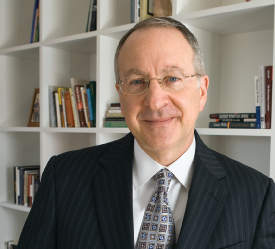
Cornell is known as a powerhouse in science and technology. Last year, our research expenditures were almost $660 million, and these funds largely supported important work in the life, physical, mathematical, engineering, and social sciences. Continuation and enhancement of our leadership in these fields is a high priority for the University.
The arts and humanities make contributions to our campus far beyond what their research expenditures might imply. They nurture our creative instincts. They maintain and convey our cultural heritage and expose us to other cultures. They help us explore what it means to be human, including both ethical and aesthetic dimensions. If science and technology help us answer questions of "what" and "how," the arts and humanities give us ways to confront the intangible, to contemplate the "why," to imagine, to create. Cornell is and must continue to be a model for the critical role of the arts and humanities in education, research, and outreach.
Virtually all Cornell students—not just those in the College of Arts and Sciences—take courses in writing, English, philosophy, history, foreign languages. Each year, more than 1,000 students from all schools and colleges participate in choral and instrumental ensembles and student-organized musical groups, far surpassing the number who become music majors. And our students learn from some of the most creative and distinguished faculty anywhere. I will mention just a few examples. M. H. (Mike) Abrams, the Class of 1916 Professor of English Emeritus, remains a revered figure in literary criticism. Continuing his legacy are newer members of our faculty such as Masha Raskolnikov, associate professor of English, who investigates topics in medieval literary culture and contemporary theory, and Laurent Dubreuil, associate professor in the Department of Romance Studies, who studies literature as an expression of thought that defies the boundaries of rationality. Both were honored this year with Robert and Helen Appel Fellowships in recognition of their excellence in teaching and scholarly promise.
Spencer Topel, a doctoral candidate in music, composed "Automata," which served as the processional for my inauguration ceremony two years ago. The winner of the 2006 ASCAP Morton Gould Award, Topel works closely with such distinguished members of our music faculty as Kevin Ernste, Roberto Sierra, and Steven Stucky. Junot Diaz, MFA '95, won a Pulitzer Prize in fiction this year for his novel The Brief Wondrous Life of Oscar Wao. He will visit campus next spring as the Eissner Alumni Artist of the Year. Melissa Bank, MFA '88, author of the best-selling short-story collection The Girls' Guide to Hunting and Fishing, will also be a visiting writer next spring.
No curricular or research aspiration is more important to me than maintaining and enhancing Cornell's strength in the artistic and humanistic disciplines. We will accomplish this by continuing Provost Biddy Martin's strategic and forward-looking support for recruitment and retention in these fields, as well as for developing better facilities for the humanities. We are engaged in serious fundraising for the arts and humanities, and—thanks to your support—we are succeeding.
Last fall, the Andrew W. Mellon Foundation pledged $2.5 million to help Cornell endow three new senior humanities professorships. To meet the Mellon challenge, we need to raise $9.6 million over the next five years. In support of the $20 million expansion of the Johnson Art Museum, we have raised more than $18.5 million so far, including generous grants from the Kresge Foundation, the National Endowment for the Humanities, and other foundations, and especially from alumni, families, and friends of the University. Paul Milstein Hall will provide a much-needed home for our top-ranked undergraduate architecture program in a facility that will be a campus landmark. And a proposed new humanities building on the Arts Quad—the historic heart of the campus—will signal the priority we give to humanistic study.
Through our commitment to the arts and humanities, Cornell will remain a place where culture is created, conveyed, safeguarded, and preserved—and where we encourage the aesthetic and ethical development of all of our students. I invite you to be part of the re-birth of the arts and humanities at Cornell.
— President David Skorton
david.skorton@cornell.edu


